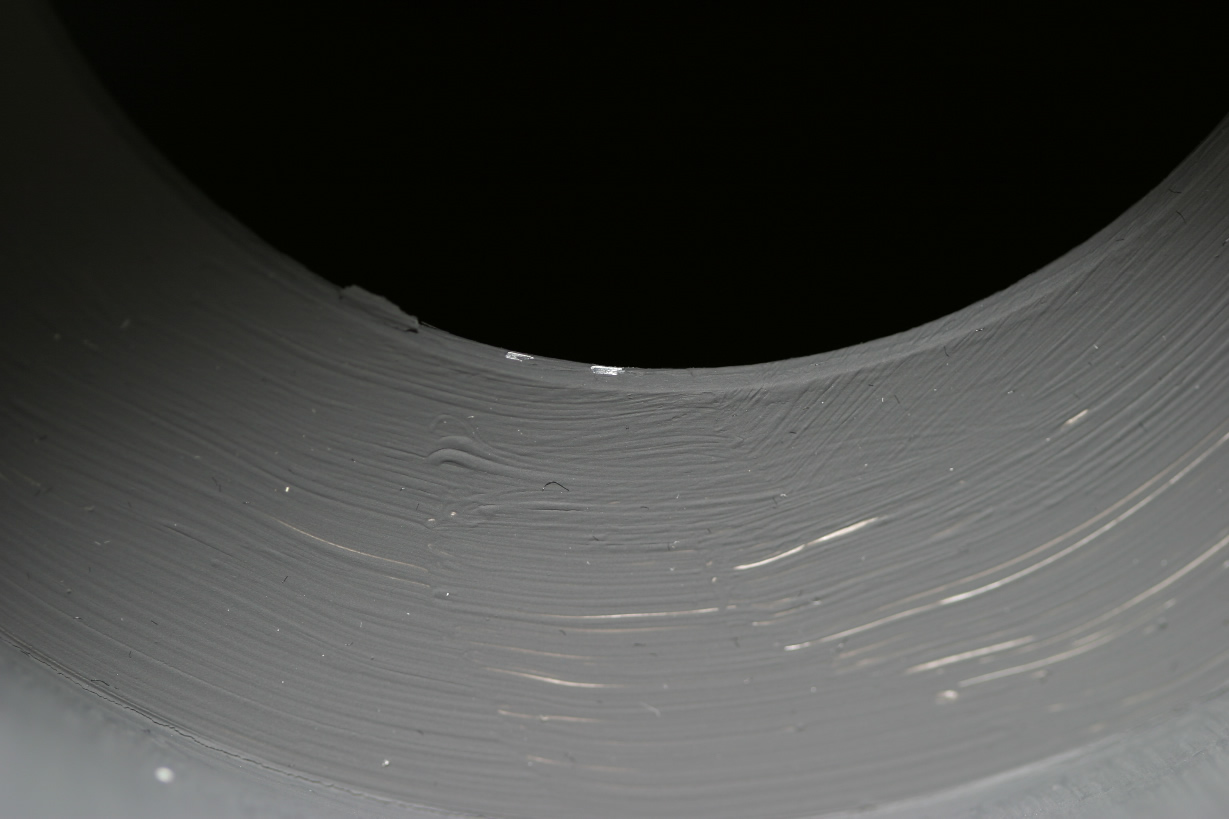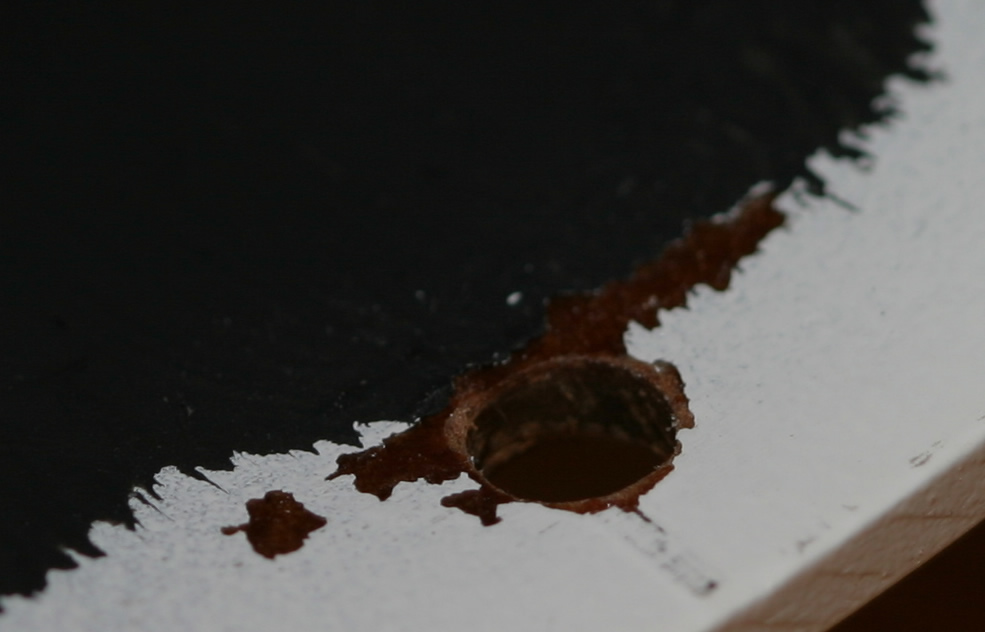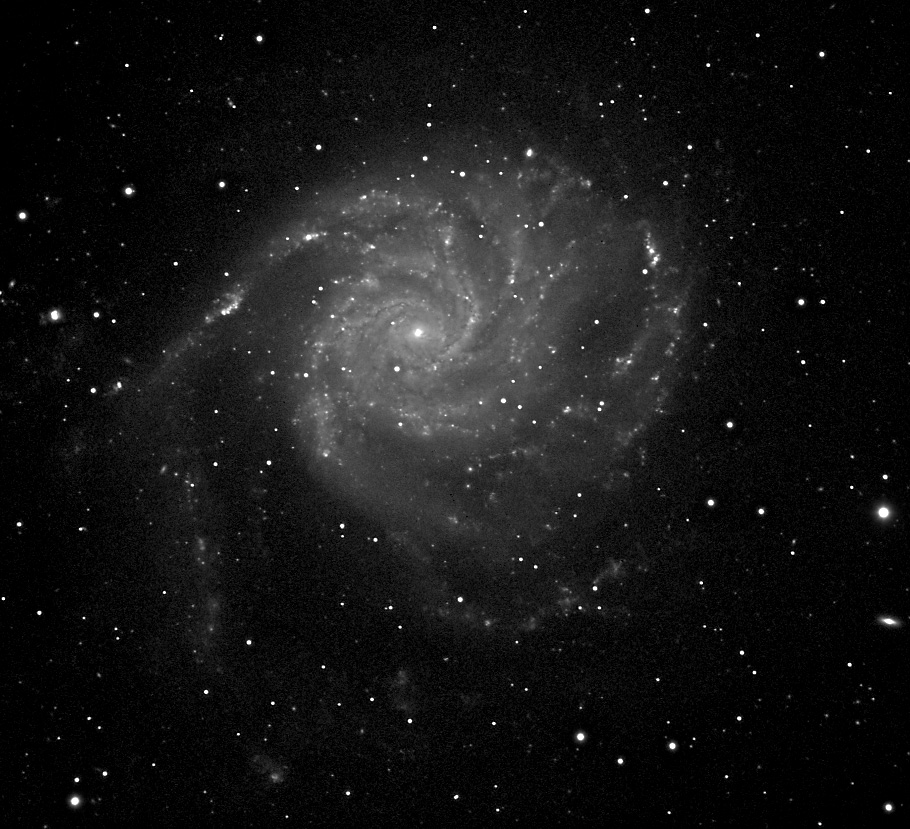TMB Telescopes - really high end?
This is the story of my TMB refractor 115/805, an "ultra high performance apochromatic telescope". In early 2003, the Astro-Physics waiting list being so crowded, I decided to purchase a TMB telescope. TMB telescopes are a kind of hybrid: the lens, said to be designed by Thomas Back, is produced by LZOS Russia and shipped to Germany where it is mated to tube and a focuser at a company called APM to be finally sold worldwide under the TMB brand. TMB telescopes enjoy a good reputation and have usually been reviewed very positively.
My telescope, purchased from Perseu in Portugal arrived in May 2003, in a box covered with APM shipping slips. It had essentially been shipped from Germany to Portugal and bounced from there (which is fine).
 |
 |
|---|---|
| On the front, an ETX 125. In the back, the TMB refractor on a Vixen New Atlux mount. | The current telescope family. A Vixen R200SS Newtonian, the TMB refractor, a 11" Celestron and a small skywatcher 80ED refractor. I also own a Lichtenknecker 200 mm Flat Field Camera (not pictured here) |
Apochromatic refractors, especially apochromatic triplets, are supposed to be the upper class of telescopes and TMB refractors are supposed to be among the best refracting telescopes. That's why I was surprised by a few immediate annoyances. The rings were of very poor quality. A couple of screws had been forced. The scope was supposed to ship with a small extension tube, it was missing, the lens was dirty with what was apparently an eyelash glued to its back side... On the SAA newsgroup, Thomas Back himself suggested that I had bought a second hand scope. Of course, that wasn't supposed to be the case. At least, that's not what was stated on my receipt...
Anyway, fast forward to first light: let's be honest, the TMB telescope held most of its promises producing decent images given my poor Belgian skies. However I did notice some stray light and joined the TMB telescope newsgroup to enquire about the possible origins of that reflection: I had noticed some bright spots on the outside of the baffle and wanted to know if that could be the cause. Bad idea: as soon as I expressed any doubts on the quality of the paint, I was litterally assaulted by a couple of senile TMB owners for whom I was automatically the bad guy. Casuistic rethoric followed to demonstrate that my telescope, if it wasn't perfect wasn't, by definition, a TMB. What was written on my invoice didn't matter, how the telescope was and still is advertised by APM and its resellers didn't matter. Nothing mattered but the loving quality control offered by the designer: if I didn't have that, I didn't have a real TMB and had no reason to complain that my TMB wasn't perfect... Of course, other European TMB telescope owners were quick to point out that some of their scopes, being perfect, deserved the name of TMB even if they hadn't been inspected by the designer. Hilarious. A few contributors were nice, kind and polite. Update: stranger things do happen in apochromatic refractor land - see this thread for example... I wonder if the seller wrote glowing reports as part of its credit deal.
Then, suddenly, the APM owner surfaced and accused me of having mishandled the telescope. He first put the blame on my reseller, claiming he only had problems with him. (I've made several purchase from that reseller and everything went well in each cases). After a serie of additional acid comments and insults, he offered a "revision" of the telescope, should I decide to ship it back to him at my own expense. I declined and proceeded to use the telescope.
When a fleck of black paint fell on my CCD window, I decided to investigate the inside of the telescope a bit further. I was in for a surprise. The baffle has obviously been painted with a brush, and very poorly.

The baffle of the TMB telescope. Refractors need baffles to prevent internal reflections.
No enough black paint but, otoh, the TMB refractor's tube had been painted so generously that white paint spilled everywhere

This is the place where the focuser holder is attached to the telescope tube.
The cause of the straight lights became obvious

This screw secures (?) the feathertouch focuser in the focuser holder.
and, to top it all, the quality of the material speaks for itself. Rust has already found its way into the tube. As some SAA contributor put it, no one should use iron anymore! I'd like to have feedback from other TMB telescope users about the material of their tubes.

This is the inside of the TMB telescope tube. Obviously, it is made of soft iron.
I am sure that there are happy TMB telescope owners out there. I am sure not all TMB refractors are as badly built as mine. However, I believe that the information offered on this page could be of value to a refractor buyer should they contemplate the purchase of a TMB telescope.
Do not hesitate contacting me if you want more information about my scope :-)
No astro page would be complete without a few astronomy pictures taken by the scope

m101 taken with the TMB Refractor - 180 minutes auto-guided.

m51 taken with the TMB refractor - 60 minutes autoguided.
I am currently planning to make a few optical tests and shoot some comparative images between the 80 ED and the 115 TMB refractor. Poor weather in Belgium throughout the 2005 summer prevented me from starting that project. Stay tuned.